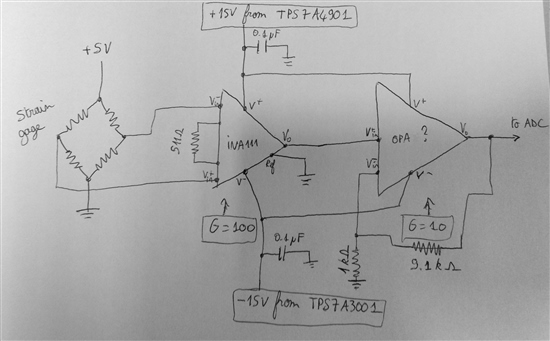Hi,
I want to amplify the signal from a load cell for dynamic applications, and I need a overall gain of 1000. The problem is that the signal frequency I'm interested in may go up to 1 MHz. I figured that I should use a INA111 with a gain of 100, which should work fine at 1 MHz, followed by an op-amp in closed loop set up with a gain of 10 (see picture).
Hence the following questions:
1. Does this make sense? Or is it better to use the INA111 with a gain of 1000 alone, but in this case I won't get the high frequency in my signal, right?
2. Which OPA do you recommend for this application? I would like to use the same power supply as the INA111, so +-15V ideally.
3. I want to prototype this on a breadboard, and I'm concerned it might oscillate. Do you have any tip to make sure it doesn't happen?
Note: I am a mechanical engineer, I wouldn't say that I have no idea what I'm doing, but I am definitely not a specialist.
Many thanks!
Baptiste


